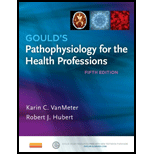
Concept explainers
To describe: The normal immune response.
Concept introduction: A complex network of cells, tissue, and organs that work collectively to protect the body and fight against the pathogens or foreign substances are called the immune system. Immune cells are the cells that actively participate in the defense mechanism initiated by the immune systems.
Explanation of Solution
Normal immune response
Immune response of the body starts when the pathogen enters the body. Macrophages are the first immune cells that encounter and engulf the pathogen by phagocytosis. Macrophage (antigen presenting cells) displays the phagocytosed fragments of the antigen on its cell surface. T-helper cells which have the specific TCR (T-cell receptors) bind with the phagocytosed antigen. This bond causes the release of interleukin-1 molecules from the macrophages and interleukin-2 from the T-helper cells.
The secretion of interleukin-2 initiates the growth and proliferation of cytotoxic T-cells, proliferation, and secretion of antibody from the B-cells.
Here onwards, the immune response follows two different paths that are mediated by two different cells.
- Cytotoxic T-cell/ cell-mediated immunity
The displayed antigen activates and initiates the proliferation of specific cytotoxic T cells and thus, it produces the defensive chemicals such as perforin, granulysin (creates pores in the infected cell’s plasma membrane), and granzymes (to trigger apoptosis in the infected cell).
- B-cell/ humoral-mediated immunity
B cells are activated by the activity of T-helper cells and get differentiated into the plasma and memory cells. Plasma effector cells effectively secrete an array of antibodies that circulate toward the site of infection, binds with it, and destroys all the antigens. The memory cells remain in the body to elicit the immediate immune response when the same antigen enters the body for the second time.
Want to see more full solutions like this?
Chapter 7 Solutions
Gould's Pathophysiology for the Health Professions, 5e
- true or false dark skinned infants should be screened for vitamin D levelsarrow_forwardtrue or false any practice employee is authorized to and should communicate collection guidelines with practice?arrow_forwardrtrue or false equesting a listing of specific creditreferences during patient intake os an acceptable business practice?arrow_forward
- give an overview on the respiratory assessmentarrow_forwardexplain an abdominal exam?arrow_forwardDiscuss β -Lactam antibiotics under the following subheadings Classifications of penicillins Classification of Cephalosporins General Mechanism of Actions Clinical Indications of penicillins and cephalosporins Adverse effects of β-lactamsarrow_forward
- a. Define neoplasm b. Differentiate between benign and malignant tumours c. Describe the molecular basis of cancerarrow_forwarddifferentiate the extra heart sounds S3,S4, murmurs and gallopsarrow_forward• Define shock and list types of shock • Discuss pathogenesis of septic shock. • Enumerate the stages of shock. • Define oedema and describe the pathophysiologic mechanisms of oedema with examples.arrow_forward
- Discuss Hypertension under the following headings: Definition Diagnosis Non-pharmacological intervention Drugs Classification Management of a Hypertensive emergencyarrow_forwardExplain how the answer could be 2 or 1.8 WITHOUT changing the questionarrow_forwardoverview of the neurological system, cranial nerves and what part of the body it innervatesarrow_forward
 Phlebotomy EssentialsNursingISBN:9781451194524Author:Ruth McCall, Cathee M. Tankersley MT(ASCP)Publisher:JONES+BARTLETT PUBLISHERS, INC.
Phlebotomy EssentialsNursingISBN:9781451194524Author:Ruth McCall, Cathee M. Tankersley MT(ASCP)Publisher:JONES+BARTLETT PUBLISHERS, INC. Gould's Pathophysiology for the Health Profession...NursingISBN:9780323414425Author:Robert J Hubert BSPublisher:Saunders
Gould's Pathophysiology for the Health Profession...NursingISBN:9780323414425Author:Robert J Hubert BSPublisher:Saunders Fundamentals Of NursingNursingISBN:9781496362179Author:Taylor, Carol (carol R.), LYNN, Pamela (pamela Barbara), Bartlett, Jennifer L.Publisher:Wolters Kluwer,
Fundamentals Of NursingNursingISBN:9781496362179Author:Taylor, Carol (carol R.), LYNN, Pamela (pamela Barbara), Bartlett, Jennifer L.Publisher:Wolters Kluwer, Fundamentals of Nursing, 9eNursingISBN:9780323327404Author:Patricia A. Potter RN MSN PhD FAAN, Anne Griffin Perry RN EdD FAAN, Patricia Stockert RN BSN MS PhD, Amy Hall RN BSN MS PhD CNEPublisher:Elsevier Science
Fundamentals of Nursing, 9eNursingISBN:9780323327404Author:Patricia A. Potter RN MSN PhD FAAN, Anne Griffin Perry RN EdD FAAN, Patricia Stockert RN BSN MS PhD, Amy Hall RN BSN MS PhD CNEPublisher:Elsevier Science Study Guide for Gould's Pathophysiology for the H...NursingISBN:9780323414142Author:Hubert BS, Robert J; VanMeter PhD, Karin C.Publisher:Saunders
Study Guide for Gould's Pathophysiology for the H...NursingISBN:9780323414142Author:Hubert BS, Robert J; VanMeter PhD, Karin C.Publisher:Saunders Issues and Ethics in the Helping Professions (Min...NursingISBN:9781337406291Author:Gerald Corey, Marianne Schneider Corey, Cindy CoreyPublisher:Cengage Learning
Issues and Ethics in the Helping Professions (Min...NursingISBN:9781337406291Author:Gerald Corey, Marianne Schneider Corey, Cindy CoreyPublisher:Cengage Learning





